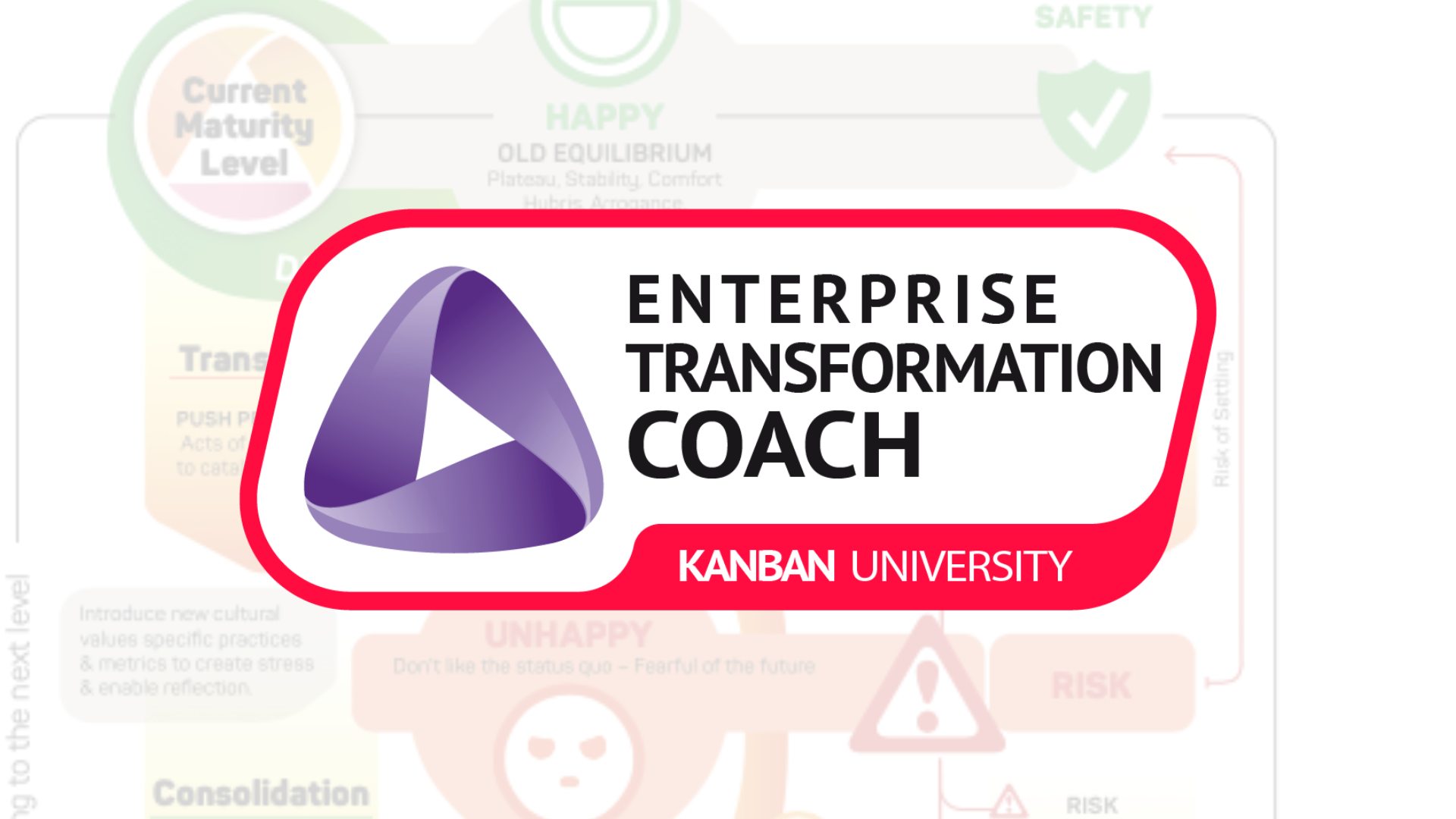Escalating Feedback Loops
“This is insane! My calendar is full of meetings already. How am I supposed to fit another seventeen reviews into my schedule?”

Did you have a similar thought looking at this diagram visualizing our Practice #5 “Introduce Feedback Loops”? Don’t worry! If you plan to improve your work using the Kanban Maturity Model, adding additional meetings into your calendar will be the last thing you will be asked for.
First recognize that each stack of meetings and reviews in the diagram represents the same meeting or review performed at a different level of maturity, a different level of fidelity, each time improving in scope, scale, professionalism, facts & data, and action-oriented decision making. So, there aren’t 17 meetings or reviews, there are only 7 identified feedback loops in the Kanban Method. Your job is to find the lowest resistance approach to implementing each of them given what you already have.
Let me take you through the steps and questions you should consider before doing so.
The first set of questions:
Do I have this feedback loop already? Should we recognize it for what it is and just tune it up a bit?
It’s quick and easy. The feedback loop exists already, and it has its cadence. People are used to it, no additional calendar-messing activities have to be taken. Simply adjust the agenda and the focus of the discussion and the decision made.
Do I have an alternative (that can be repurposed)?
First, verify existing meetings and reviews. Do you practice Daily Stand-ups or Retrospectives? That’s great! Don’t rename them just to feel more kanbanized. It’s totally fine to keep an alternative, simply adjust its focus, agenda, and anticipated outcomes.
Do any of them require improving?
To start, look at the Feedback Loops descriptions in the “Kanban Maturity Model” or on kmm.plus. Do you think your existing meeting or review would benefit from some KMM improvements? Introduce them without changing anything else in the formal name or cadence of these appointments (if not absolutely required).
The second set of questions:
If you answered “no” to the first two questions, and your assessment says that the new Feedback Loop is required, ask yourself:
Can I merge this feedback loop into any existing meeting or review?
One of the most popular feedback loops which trainees start practicing after completing the Kanban System Design class is Blocker Clustering. Very often, however, they don’t experience that many blockers to organize a separate conversation about them, but on the other hand, they don’t want to keep the analysis a few months separated.
The good practice in such a situation will be merging the blocker clustering and discussion into another loop that exists already, e.g., your improvements discussions or flow reviews.
If you answered “no” and you see that you need to book a new timeslot in the calendar:
Can I merge two or more new feedback loops?
This one is very similar to the example described above, but you merge new reviews into one. In Mauvisoft, we conduct the Service Request Review and the Service Delivery Review at the same time due to the number of items in progress and the actors involved in both parts of the system.
Merging several feedback mechanisms, several meetings and reviews together is a common practice in small-scale implementations and smaller organizations. The full set of 7 makes the most sense in organizations numbering several hundred or thousands of people.
If the answer is “no” again then, and only then, create a new, separate meeting or review.
Don’t forget!
Feedback Loops are not limited to the time you and your colleagues spend in the meeting rooms!
Look around at the elements of your environment that talk to you (sometimes more, sometimes less metaphorically) like:
- Kanban boards
- Metrics
- Customer surveys
- Your colleagues sending instant messages
Most importantly, do not forget about the underlying question: does it really have to be a meeting?

(Source of an image: https://www.linkedin.com/company/corporate-rebels—the-search-for-the-happy-grail/)





I observed that the feedback loop element focused here are physical meeting. Can we consider DevOps feedback loop like telemetry and other automated feedback loops too?
Thank you
Hi! Thanks for your comment. The “physical” aspect is related to the cadences. For the feedback loop to operate, we need a stressor, a reflection mechanism, an act of leadership, and the mean to close the loop (e.g. by verifying the outcome). I don’t know the details of the means you are describing but they look to me more like feedback mechanisms.